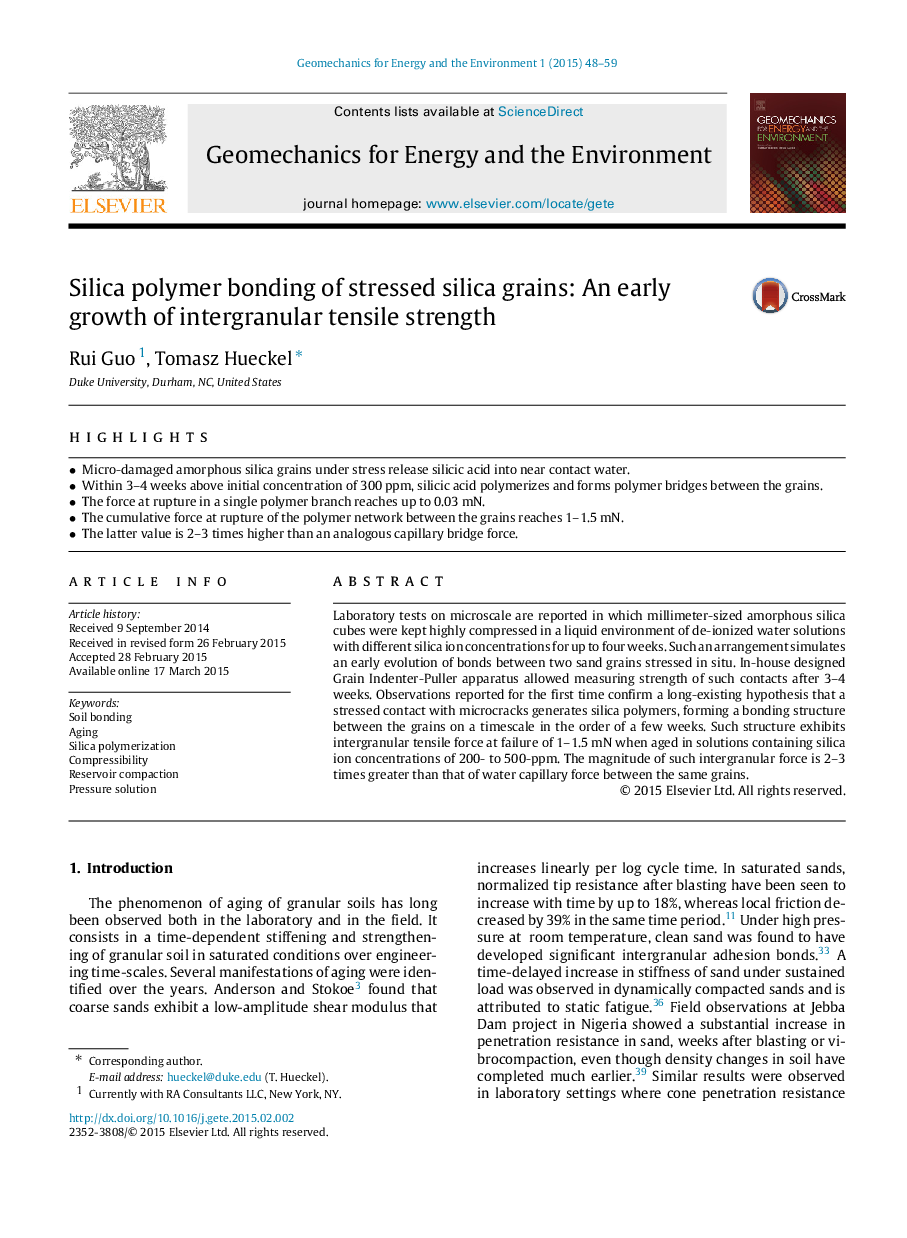| کد مقاله | کد نشریه | سال انتشار | مقاله انگلیسی | نسخه تمام متن |
|---|---|---|---|---|
| 273933 | 505175 | 2015 | 12 صفحه PDF | دانلود رایگان |
• Micro-damaged amorphous silica grains under stress release silicic acid into near contact water.
• Within 3–4 weeks above initial concentration of 300 ppm, silicic acid polymerizes and forms polymer bridges between the grains.
• The force at rupture in a single polymer branch reaches up to 0.03 mN.
• The cumulative force at rupture of the polymer network between the grains reaches 1–1.5 mN.
• The latter value is 2–3 times higher than an analogous capillary bridge force.
Laboratory tests on microscale are reported in which millimeter-sized amorphous silica cubes were kept highly compressed in a liquid environment of de-ionized water solutions with different silica ion concentrations for up to four weeks. Such an arrangement simulates an early evolution of bonds between two sand grains stressed in situ. In-house designed Grain Indenter-Puller apparatus allowed measuring strength of such contacts after 3–4 weeks. Observations reported for the first time confirm a long-existing hypothesis that a stressed contact with microcracks generates silica polymers, forming a bonding structure between the grains on a timescale in the order of a few weeks. Such structure exhibits intergranular tensile force at failure of 1–1.5 mN when aged in solutions containing silica ion concentrations of 200- to 500-ppm. The magnitude of such intergranular force is 2–3 times greater than that of water capillary force between the same grains.
Journal: Geomechanics for Energy and the Environment - Volume 1, April 2015, Pages 48–59
